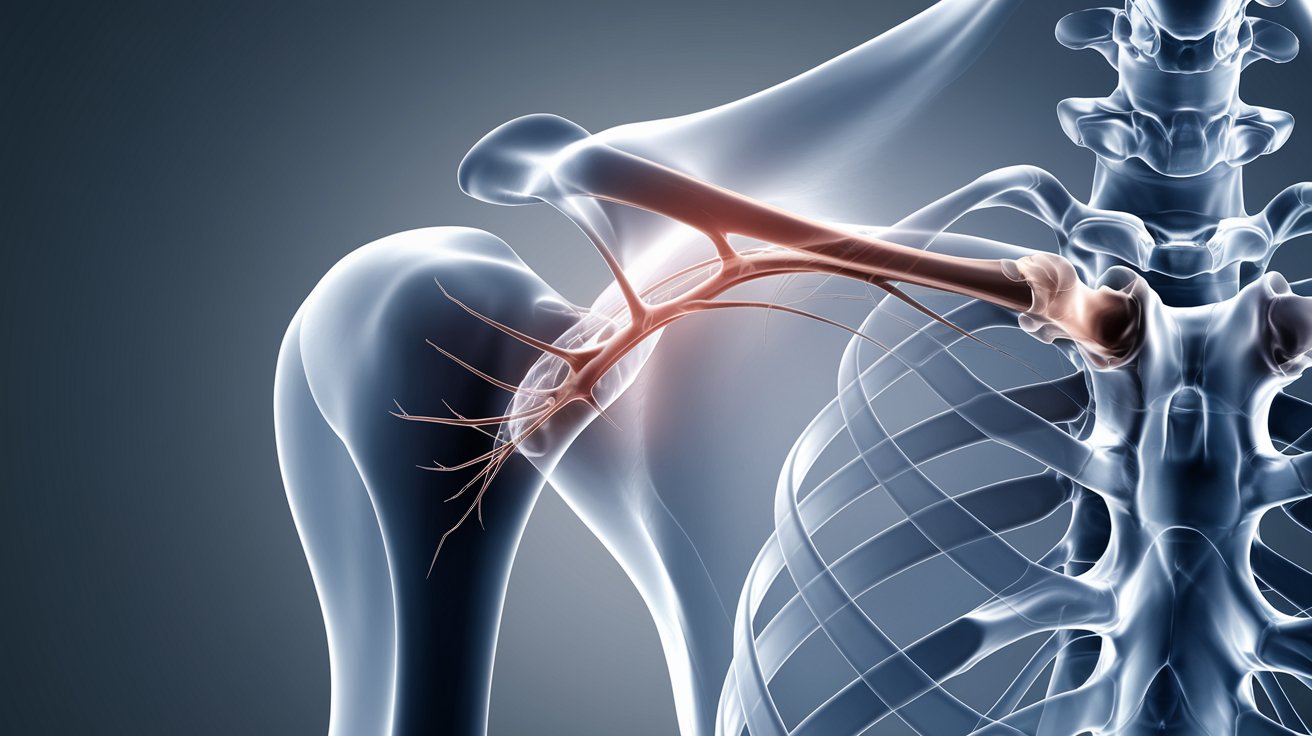
What is the costocoracoid ligament? This small but mighty structure connects the first rib to the coracoid process of the scapula. Why is it important? It plays a crucial role in shoulder stability and movement. What happens if it's congenitally short? A congenitally short costocoracoid ligament can lead to restricted shoulder motion, pain, and even nerve compression. How common is this condition? It's rare but can significantly impact daily activities. Can it be treated? Yes, treatments range from physical therapy to surgical intervention. Why should you care? Understanding this ligament helps in diagnosing shoulder issues and finding effective treatments.
Key Takeaways:
- The costocoracoid ligament, when congenitally short, can limit shoulder movement and cause pain. Early diagnosis and proper treatment are crucial for improving outcomes and restoring shoulder function.
- Imaging techniques such as X-rays, MRI scans, and ultrasound can help diagnose a congenitally short costocoracoid ligament. Treatment options range from physical therapy to surgical interventions, aiming to improve shoulder strength and flexibility.
What is the Costocoracoid Ligament?
The costocoracoid ligament is a lesser-known but crucial part of human anatomy. It connects the first rib to the coracoid process of the scapula, playing a significant role in shoulder stability and movement. Here are some fascinating facts about this ligament, especially when it is congenitally short.
- The costocoracoid ligament is part of the clavipectoral fascia, a layer of connective tissue in the shoulder region.
- A congenitally short costocoracoid ligament can restrict shoulder movement, leading to limited range of motion.
- This ligament helps protect the axillary vessels and nerves, which are vital for arm function.
- The ligament's name comes from its attachment points: "costo" refers to the rib, and "coracoid" refers to the coracoid process of the scapula.
- In some cases, a short costocoracoid ligament can cause impingement syndrome, where shoulder tendons are compressed during arm movements.
Causes and Symptoms of a Congenitally Short Costocoracoid Ligament
Understanding the causes and symptoms can help in early diagnosis and treatment. Here are some key points to consider.
- A congenitally short costocoracoid ligament is usually present from birth, often due to genetic factors.
- Symptoms may include shoulder pain, especially during activities that involve lifting the arm.
- Individuals may experience a clicking or popping sensation in the shoulder joint.
- Muscle weakness in the shoulder and arm can also be a symptom.
- In severe cases, the condition can lead to chronic shoulder instability.
Diagnosis and Imaging Techniques
Accurate diagnosis is essential for effective treatment. Various imaging techniques can help identify a congenitally short costocoracoid ligament.
- X-rays can sometimes reveal abnormalities in the shoulder structure.
- MRI scans provide detailed images of soft tissues, including ligaments and tendons.
- Ultrasound imaging can be used to assess the ligament's length and condition.
- Physical examinations often include tests for range of motion and shoulder stability.
- Doctors may also use CT scans for a more comprehensive view of the shoulder anatomy.
Treatment Options
Several treatment options are available for managing a congenitally short costocoracoid ligament. These can range from conservative methods to surgical interventions.
- Physical therapy can help improve shoulder strength and flexibility.
- Anti-inflammatory medications may be prescribed to reduce pain and swelling.
- Corticosteroid injections can provide temporary relief from severe pain.
- In some cases, surgery may be necessary to lengthen the ligament or relieve impingement.
- Post-surgical rehabilitation is crucial for restoring full shoulder function.
Impact on Daily Life
Living with a congenitally short costocoracoid ligament can affect daily activities. Here are some ways it can impact life.
- Simple tasks like reaching for objects on high shelves can become challenging.
- Sports and physical activities may be limited due to restricted shoulder movement.
- Occupational tasks that require repetitive arm movements can exacerbate symptoms.
- Chronic pain and discomfort can affect overall quality of life.
- Early intervention and proper management can significantly improve outcomes for individuals with this condition.
Final Thoughts on Costocoracoid Ligament Anomalies
Understanding the costocoracoid ligament and its congenital anomalies can shed light on various medical conditions. These anomalies, though rare, can impact shoulder mobility and overall musculoskeletal health. Awareness of such conditions helps in early diagnosis and effective treatment, improving patient outcomes.
Medical professionals should consider these anomalies when diagnosing unexplained shoulder pain or restricted movement. For patients, knowing about these conditions can lead to more informed discussions with healthcare providers.
In essence, the costocoracoid ligament, though small, plays a significant role in shoulder function. Recognizing its potential anomalies ensures better healthcare and patient awareness. Stay informed, and always consult a medical professional if you suspect any issues related to this ligament. Knowledge is power, especially when it comes to health.
Frequently Asked Questions
Was this page helpful?
Our commitment to delivering trustworthy and engaging content is at the heart of what we do. Each fact on our site is contributed by real users like you, bringing a wealth of diverse insights and information. To ensure the highest standards of accuracy and reliability, our dedicated editors meticulously review each submission. This process guarantees that the facts we share are not only fascinating but also credible. Trust in our commitment to quality and authenticity as you explore and learn with us.
